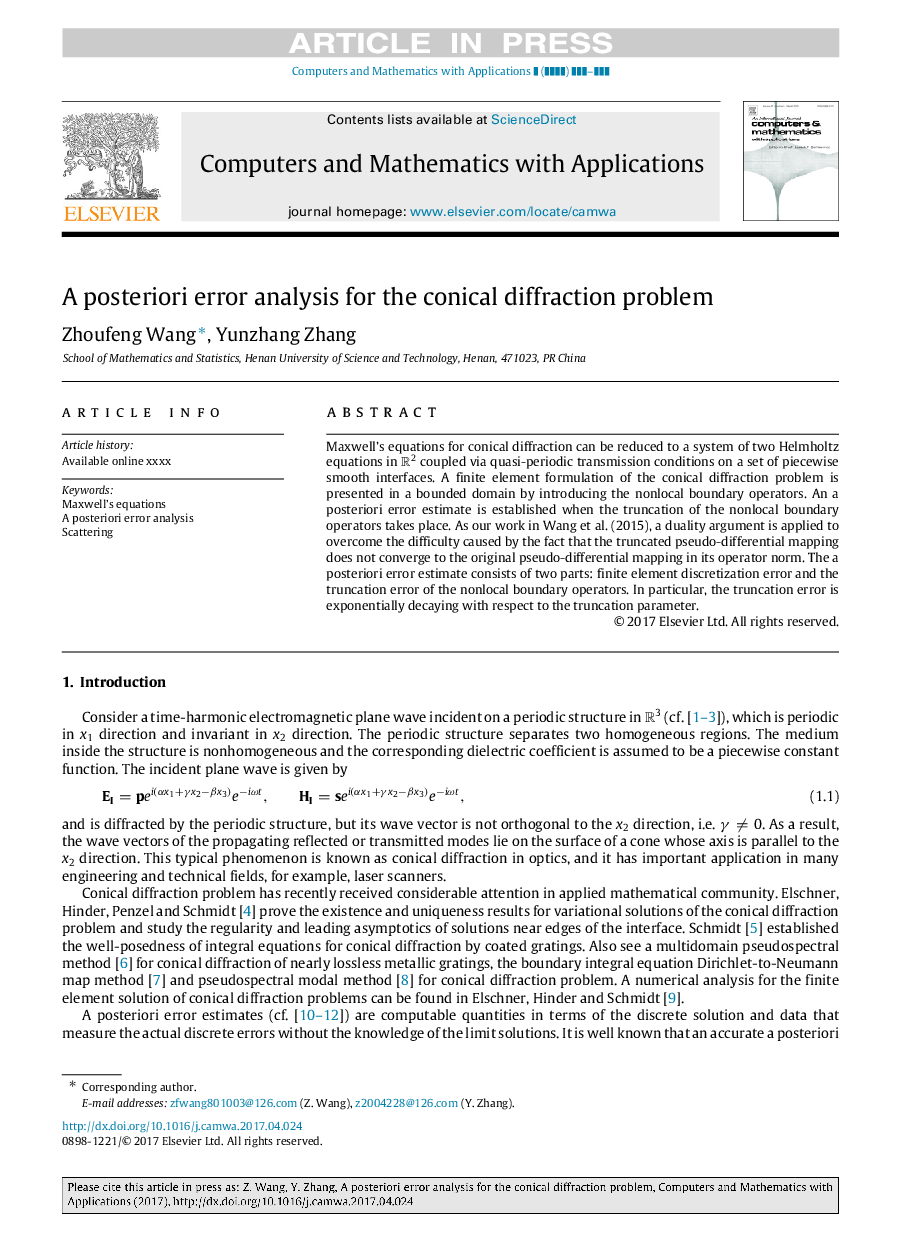| Article ID | Journal | Published Year | Pages | File Type |
|---|---|---|---|---|
| 4958483 | Computers & Mathematics with Applications | 2017 | 13 Pages |
Abstract
Maxwell's equations for conical diffraction can be reduced to a system of two Helmholtz equations in R2 coupled via quasi-periodic transmission conditions on a set of piecewise smooth interfaces. A finite element formulation of the conical diffraction problem is presented in a bounded domain by introducing the nonlocal boundary operators. An a posteriori error estimate is established when the truncation of the nonlocal boundary operators takes place. As our work in Wang et al. (2015), a duality argument is applied to overcome the difficulty caused by the fact that the truncated pseudo-differential mapping does not converge to the original pseudo-differential mapping in its operator norm. The a posteriori error estimate consists of two parts: finite element discretization error and the truncation error of the nonlocal boundary operators. In particular, the truncation error is exponentially decaying with respect to the truncation parameter.
Related Topics
Physical Sciences and Engineering
Computer Science
Computer Science (General)
Authors
Zhoufeng Wang, Yunzhang Zhang,
